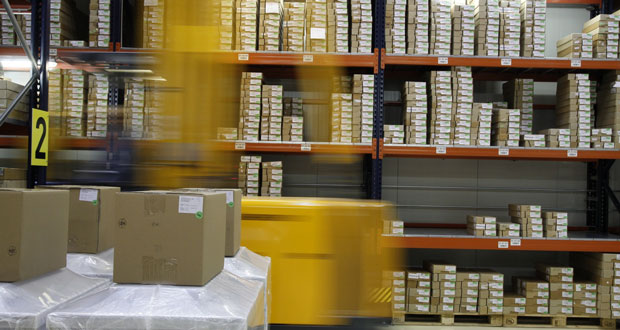Health and Safety can have a massive impact on the way businesses operate it can be difficult to know the correct procedures. Plastor brings you a guide to improving the health and safety of your warehouse.
Warehouses can be dangerous places to work. Even with as many mitigations in place as humanly possible, it’s still a place where heavy goods are moved and forklifts come and go.
Even the best-run warehouse offers significant risk.
If you’re planning a new warehouse or are new to the industry, there are practical, actionable ways to minimise that risk.
That’s what this post is all about.
We aren’t reinventing the wheel here, merely outlining some simple ways to improve the health and safety of your warehouse and, therefore, your workforce.
Training, training, training
The importance of a trained workforce cannot be overstated. Training takes time and resources, but it’s an investment and not a cost.
Training makes employees feel valued and more part of a team. It can also help reduce incidents.
Training should include safe movement around the warehouse, traffic priorities for forklifts and loaders, lifting technique, safe handling techniques, working at height, how to tackle spills and breakages and rudimentary first aid.
Safe goods handling
Part of designing a warehouse is looking at the movement of goods from where they come in, to storage, to loading. The shortest distance between those three areas is the most efficient.
It should also include goods handling. Avoiding manual handling as much as possible, reducing the need to work at height and implementing technology or processes to avoid handling of the goods as much as possible.
Where it isn’t possible to avoid, effective training and the right processes for handling goods should be used at all times.
Good communication
Communication is key in any workplace, but especially one where you face multiple hazards.
A warehouse manager needs to know who is where, when and why. They need to know what’s being loaded and where, where forklifts are and where they are going.
Staff need to know who else is working in their area. Whether forklifts will be coming through and what potential hazards they will face on their route.
A system of sensible communication using whatever method best suits your business can help drastically improve health and safety.
Rehearsing disaster
Rehearsing for disaster is all about drills. Practice scenarios that cover chemical spills, vehicle collisions, injury or incidents and the types of situations your warehouse might face.
It costs money and efficiency but gives you and your team confidence in knowing what is expected of them and what type of reaction is required.
The emergency services drill all the time and every one of them says drills are incredibly valuable in preparing you for stressful, highly charged situations.
Appropriate PPE
PPE, Personal Protective Equipment has had something of a bad rap thanks to overzealous health and safety officers. Yet it’s an inescapable part of the modern workplace.
That said, the correct PPE, implemented in the correct ways can be a genuine lifesaver.
Staff may bemoan high viz or hard hats but experience has demonstrated both make staff safer and much more visible within a fast-moving workplace.
Keeping PPE sensible and keeping it appropriate will go a long way to increased acceptance.
High viz, hard hats, steel toe caps and work trousers should suffice in most warehouses. Make a judgement call on your particular plans and outfit staff accordingly.
Avoid working at height wherever possible
Stack ‘em high may be part of warehouse parlance, but it doesn’t have to be.
Yes, stacking at height is a good use of space, but unless you can safely access that height, it’s an accident waiting to happen.
High stacking is great if you have automated systems for retrieval and storage. It’s also workable if you have experienced hands who are good with a forklift.
Otherwise, it’s a hazard.
Humans are not designed to work at height. They are certainly not equipped to handle heavy or bulky items at height, so avoid or automate it wherever possible.
Safe FLT practices
The forklift is the best thing to ever happen to a warehouse, yet it also brings challenges.
They move fast, visibility isn’t always the best in cramped warehouses and the potential for accidents is huge.
Good warehouse design can mitigate a lot of that, but not all of it.
Staff training is key. As is good warehouse design where there is enough space for FLTs and humans to coexist safely.
If possible, section off aisles where forklifts are working. Otherwise, ensure adequate training for all staff on working around machinery and effective observation.
Safe racking and stacking
Ensuring strict rules on shelf or rack loading can avoid the vast majority of risks to do with storage.
Using appropriate goods handling equipment, dollies, trucks or forklifts help goods in movement. Proper shelving and racks and having strict policies in place for loading and overloading should all help.
All shelving and racking should be inspected regularly and any damage or defects reported and addressed right away.
Health and safety in warehouses
As you can see, the vast majority of these tips are common sense. Train your staff to recognise and avoid the majority of risks. Design the warehouse to enable FLTs and staff to safely work together and so on.
Following these will not only help reduce incident levels in your warehouse, but make it a safer, more productive place to work.
Morale should remain high and, all other things being equal, the investment in health and safety, without going over the top should also help with staff retention.
All good reasons to get on top of health and safety nice and early!
-ends-
To have your industry news published in the pages of FMJ’s news section, Month in FM, and here online on fmj.co.uk, please send your news and image to Danny Grange danny.grange@kpmmedia.co.uk
The view or information contained within these unedited press releases, are that of the company producing it and not necessary the views of kpm.





